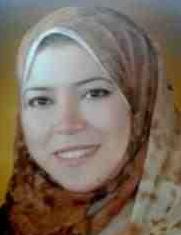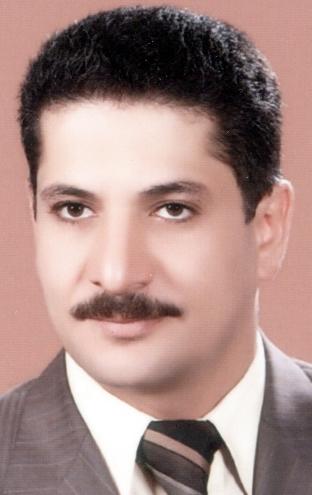
|
Organophosphorus insecticides in honey,pollen and bees (Apis mellifera L.) and their potential hazard to bee colonies in Egypt
|
|
|
YahyaAlNaggar a,b,n, GarryCodling b, AnjaVogt b, ElsaiedNaiem a, MohamedMona a, Amal Seif a, JohnP.Giesy b,c,d,e,f,g
|
|
|
Department of Zoology, Faculty of Science, Tanta University, Tanta, Egypt
|
|
|
monamm3@yahoo.com
|
|
|
There is no clear single factor to date that explains colony loss in bees, but one factor proposed is the wide-spread application of agrochemicals. Concentrations of 14 organophosphorous insecticides (OPs) in honey bees(Apis mellifera) and hive matrices (honey and pollen) were measured to assess their hazard to honey bees. Samples were collected during spring and summer of 2013, from 5 provinces in the middle delta of Egypt. LC/MS–MS was used to identify and quantify individual Ops by use of a modified Quick Easy Cheap Effective Rugged Safe (QuEChERS) method. Pesticides were detected more frequently in samples collected during summer. Pollen contained the greatest concentrations of OPs. Profen of os chlorpyrifos , malation and diazinon were themost frequently detected OPs. Incontrast, ethopropphorate, coumaphos and chlorpyrifosoxon were not detected. Atoxicun its approach, with letha lityas the end point was used in an additive model to assess the cumulative potential for adverse effects posed by OPs. Hazard quotients(HQs) in honey and pollen ranged from 0.01–0.05 during spring and from 0.020 – 0.08 during summer , respectively. HQs based on lethality due to direct exposure of adult worker bees to OPs during spring and summer ranged from 0.04 to 0.1 for best and worst case respectively. It is concluded that direct exposure and/ or dietary exposure to Ops in honey and pollen pose little threat due to lethality of bees in Egypt
|
|

|
The application of a validated hydrodynamic model to improve the water quality management of an Egyptian shallow water coastal lake
|
|
|
M A Bek 1, 2, I S Lowndes3, D M Hargreaves4 and Amimul Ahsan5
|
|
|
1Shool of Marine Scince and Technology, University of Massachusetts-Dartmouth, USA, 2Department of Physics and Engineering Mathematics, Faculty of Engineering, Tanta, University, Egypt,3Chemical and Environmental Engineering Department, Faculty of Engineering, University of Nottingham, UK, 4Civil Engineering Departemnt, Faculty of Engineering, University of Nottingham, UK, 5Civil Engineering Departemnt, Faculty of Engineering, University of Putra, Malasia.
|
|
|
malibec2005@yahoo.com
|
|
|
A full validated three dimension water hydrodynamic model of Lake El Manzala, Egypt, based on a three-dimensional hydrodynamic model (FVCOM). The model was validated against the Monitoring and Modelling Coastal Lagoons Project MELMARINA 2003 collected data. The simulated water temperatures and salinity levels within the lake show good agreement with field observations. Lake El-Manzala is considered as the largest of the Egyptian shallow coastal lakes on the Mediterranean Sea coast. The lake currently supports 30% of the fresh water fish farm production of Egypt. In the past ten years the aquatic health of the lake has significantly deteriorated due to an increase in the contamination of the lake by polluted inflows. The model has been used to propose the best location for construction of a water treatment plant. This study concluded that released pollutants are dispersed under the dominant effect of water drainage inflows and the lake geometry. However, wind shear has a greater effect on pollutants dispersion in the western sector. Based on dye release experiments, a map that outlined the pollutants paths was proposed, to guide decision makers. Using dye release experiments as guidelines, it is suggested that a water quality plant to remove half the nutrients load of Bahr Elbaquer-small drain is considered the best scenario.
|
|

|
Meteorological Drought Analysis in the Eastern Nile Basin Using the Standardized Precipitation Index
|
|
|
M.S.Elkolally, M.Khadr and B.A.Zeidan
|
|
|
Faculty of Engineering, Tanta University, Egypt
|
|
|
eng_mohammed_elkolally@yahoo.com
|
|
|
Drought is one of the natural disasters which annually claim the most victims. Drought affects many aspects of environment and society, and any future increases in the demand for water will be most critical in periods of severe drought. Geospatial analysis of the past drought events and their causes can be used to mitigate of the drought impacts and development of preparedness plans. The main objective of this study is to investigate the changes in drought frequency, persistence and severity in the Eastern Nile basin during the period 1965-2000, using Standardized Precipitation Index. SPI program based on C# language was developed to monitor drought in the study area. Monthly precipitation data was collected from 28 meteorological stations distributed on the Eastern Nile basin region. SPI series of 3, 6, 9 and 12-month time scales have been calculated and used for drought analysis. Several drought events were detected during the long rainy season (June to September) and the short rainy season (March to May) as well. Annual analysis of SPI time series showed that the study area received the intense drought during the year 1984.
|
|

|
Water Quality Assessment of Rosetta Branch, Nile River, Egypt
|
|
|
A. Nada (1), M. Elshemy(1) , B. A. Zeidan(1) and A.A. Hassan(2)
|
|
|
(1) Irrigation and Hydraulic Engineering Department, Faculty of Engineering, Tanta University, Egypt. (2) Irrigation and Hydraulics Department, Faculty of Engineering Ain Shams University, Egypt.
|
|
|
ali.nada123@yahoo.com
|
|
|
Rosetta Branch is considered as one of the main sources of fresh water for drinking, agriculture, and industrial activities in Nile Delta. Water quality of Rosetta Branch has been deteriorated in the last decades due to aggressive human activities resulting in different sources of contamination, such as domestic and agricultural effluents from drains and industrial wastewater from industrial companies at Kafr El-Zayat City. As water quality assessment of Rosetta Branch is vital, this study aims to assess the water quality of Rosetta Branch using Water Quality Index (WQI) approach. Two of the most well-known WQIs have been applied in this study: (CCME WQI) and (NSF WQI). The present study is based on field and laboratory tests in order to secure water quality records for WQIs. Thirty-two water samples were collected from 8 stations along Rosetta Branch at Kafr El-Zayat City and from Tala Drain at selected typical locations. Field work was done for four seasons during the period from November 2014 to August 2015. The measured parameters are: physical; water temperature, turbidity and TDS; chemical pH, COD, BOD, DO, sulfate, phosphate, nitrate, iron and manganese; biological fecal coliform. Obtained results indicate that the water quality status of the branch varies from “Excellent” to “Marginal” range according to the Egyptian Standards (Law 48/1982), with respect to CCME WQI. For NSF WQI, the WQI ranges from “Good” to “Medium”. The study recommends that an intensive water quality monitoring program for Rosetta Branch should be urgently implemented.
|
|

|
Change Detection Analysis Using Remote Sensing and GIS Approaches for Lake Burullus, Egypt
|
|
|
A. Mohsen, M. Elshemy, B. A. Zeidan
|
|
|
Irrigation and Hydraulics Engineering Department, Faculty of Engineering, Tanta University, Egypt
|
|
|
ahmed_mohsen250@f-eng.tanta.edu.eg
|
|
|
Lake Burullus is the second largest natural coastal lake in Egypt. It has an economic importance for fish yield. However, several anthropogenic activities such as industrial, agriculture and reclamation activities lead to deterioration of water quality conditions and decrease of water body area of the lake. This study aims to model the spatiotemporal changes of lake Burullus in the period 1972–2015 using twelve Landsat {)1,3-MSS(, (4,5-TM) and )7-ETM+(} imageries and two water indices (NDWI) and (WRI). The Normalized Difference Water index (NDWI) is applied to the (MSS) imageries, while for the other imageries (TM) and (ETM+) the water ratio index (WRI) is applied to extract water feature. Obtained results show a significant decrease in water area of the lagoon; Burullus lake has lost about (49%) of its surface area during the period under consideration (from 1972 to 2015). Finally the multi-temporal maps of lake surface area are overlaid to produce a map for the changes of lake surface area using Geographic information system (GIS).
|
|

|
Assessment of Land Use/ Cover Change Using Remote Sensing and GIS in the Nile Delta, Egypt
|
|
|
S. R. Emara 1, M. Khadr2 and B. A. Zeidan3
|
|
|
Faculty of Engineering, Tanta University, Egypt
|
|
|
sobhy_emara39@f-eng.tanta.edu.eg
|
|
|
Monitoring of urbanization is a vital process to optimize the use of natural resources and accommodate development, and to minimize the impact on the environment. This paper presents the temporal and spatial patterns of land use/cover change and identifies the process of urbanization in the central portion of the Nile Delta. Multi temporal remotely sensed data from 1985 to 2016 are considered in this study. An object based image analysis technique was employed for precise classification of multi-temporal images followed by GIS-based change detection studies. Interpretations of satellite images obtained from the USGS Global web site are employed to create land cover maps for the study area. The study reveals that urban areas were increased by 18.43 Km2 (59%) in the study area during the period under consideration (from 1985 to 2016) which causes loss of productive agricultural lands. Obtained results are very essential for decision maker to investigate and assign illegal use of agricultural land in the study area.
|
|

|
Environmental Management Practices
|
|
|
Manal Mohammed Ahmed Abd-elaziz
|
|
|
Quality of health services coordinator, Tanta University Hospitals, Tanta University, Tanta, Egypt
|
|
|
manal2011medical@gmail.com
|
|
|
Environmental Management Practices
A clean environment plays an important role in the prevention of hospital associated infections (HAI). Many factors, including the design of patient care areas, operating rooms, air quality, water supply and the laundry, can significantly influence the transmission of HAI. The multiplicity and complexity of systems and environmental factors that affect negatively - if not coordination and integration among them - on the hospital buildings do its job to the fullest. Systems and environmental factors cause a lot of negative phenomena associated with the internal environment, including the phenomenon of transmission of infection. Think about the absence of integrated environmental management when dealing with environmental problems since the beginning of the design to get rid of the building and not to identify ways to apply for access to the architectural design depends on the integration of the environmental dimension. It contributes to the application of integrated environmental management systems to a large extent in the face of a problem as one of the transmission resulting from the multiplicity and complexity of environmental regulations in hospitals environmental problems
|
|

|
Green Fiscal Reforms, Environment and Sustainable Development
|
|
|
Hany M. Elshamy, Khaled I. Sayed Ahmed
|
|
|
Economics Department, Faculty of Commerce, Tanta University, Egypt
|
|
|
elshamyhany@hotmail.com
|
|
|
A green economy seeks to drive growth, jobs and environmental improvement by shifting investments towards clean and efficient technologies, natural capital and social infrastructure (UNEP, 2013). These investments need to be supported by targeted public expenditure and policy reforms. Many countries these days such as G20 adopted ‘green economy’ as a key “voluntary” tool for sustainable development.
Fiscal policies are of particular importance in a green economy transition and governments have a variety of fiscal instruments at their disposal: taxing fossil fuel use or emissions in different sectors; reforming energy subsidies that promote wasteful and environmentally harmful economic activity; and supporting clean technology and sustainable production with the help of fiscal incentives. In order to promote a green and more inclusive growth, the design of fiscal policies should consider their potential social impact on, for example, low income households as well as economic and environmental impacts.
This paper aims to discuss the impact of the green fiscal reform policies on environment to achieve the sustainable development. For this purpose, we will analyze the possible fiscal reforms and discuss its potential impacts on the environment and sustainable development in Egypt.
|
|

|
Effects of Environmentally-Relevant Mixtures of Four Common organophosphorus Insecticides on the Honey Bee (Apismellifera L.)
|
|
|
Yahya Al Naggar1*, Mohamed Mona1, John Giesy2
|
|
|
1Zoology Department, Faculty of Science, Tanta University 31527, Tanta, Egypt, 2 Toxicology center, Saskatchewan University, Saskatoon, Canada.
|
|
|
monamm3@yahoo.com
|
|
|
We assessed whether exposure to environmentally-relevant mixtures of four organophosphorus insecticides (OPs) exerted adverse effects on honey bees. Adult and worker bees were orally exposed for five days under laboratory conditions to mixtures of four insecticides, diazinon, malathion, profenofos and chlorpyrifos at two concentrations. Concentration in the mixtures tested were equivalent to the median and 95th centile concentrations of the OPs in honey, as reported in the literature. Effects on survival, behavior, activity of acetylcholinesterase (AChE), and expression of genes important in detoxification of xenobiotics and immune response were examined. Survival of worker bees was not affected by exposure to median or 95th centile concentrations of the OPs. Activity of AChE was significantly greater in worker bees exposed to the 95th centile concentration mixture of OPs compared to the median concentration mixture. Expression of genes involved in detoxification of xenobiotics was not affected by treatment, but the abundance of transcripts of the antimicrobial peptide hymenoptaecin was significantly greater in worker honey bees exposed to the median concentration mixture. Results suggest that short-term exposure to environmentally relevant concentrations of a mixture of OPs do not adversely affect worker honey bees.
|
|

|
استخدام مادة الطين في بناء المدن الصحراوية كمدخل للاستدامة مدينة غدامس كدراسة حالة
|
|
|
د. أسامة عبد النبي قنبر، م. وليد عبد السلام فريوان، م. رياض رمضان الشواخ
|
|
|
قسم الهندسة المعمارية، كلية الهندسة جامعة طنطا –مصر، اكاديمية الدراسات العليا – جنزور –ليبيا، جامعة المرقب -الخمس –ليبيا
|
|
|
DrUsamaKonbr@f-eng.tanta.edu.eg
|
|
|
في إطار التوجه العالمي صوب مفهوم الاستدامة، تسهم العمارة بوصفها عنصراً فاعلاً في التنمية في تأصيل هذا المفهوم، وحينما يتعلق الامر بالمناطق الصحراوية تتأكد أهمية هذا الاسهام ولا سيما إذا كانت منطقة الدراسة تحتاج لمزيدٍ من الاهتمام بأخذ خصوصيتها المحلية بعين الاعتبار في ضوء المقومات الثلاث الأساسية للاستدامة، وهي: البيئة، الاجتماع، الاقتصاد.
وحيث تمثل تكاليف التشييد مُحدداً أساسياً في تلك المنظومة فقد وَجهت الملاحظة العلمية أن الطوب المستخدم في بناء المدن الصحراوية لا يتماشى مع متطلباتها الحرارية مما يؤثر بالسلب على راحة المستخدمين، وبالتالي يستلزم إعادة النظر في نوعية مواد البناء وتطويرها محلياً ومن هنا نشأ الاهتمام البحثي بالطوب الطيني بغرض:
المقارنة بين مادة الطين وبعض المواد الأخرى في البناء وتلمس الأفضل، القاء الضوء على مادة الطين من خلال إبراز أهم مميزاتها التي جعلتها تحظي بهذا الاهتمام، توضيح عيوبها، دراسة إمكانية تطويرها كمادة تشييد، وإلى أي مدى يمكنها التفوق على مواد التشييد الأخرى، دراسة التطور الذي حدث لتناولها وإمكانية مواكبتها للتقنيات الحديثة، دراسة استخدامها بشكل محلي مطور كخطوة داعمة لاستدامة بيئة الدراسة الصحراوية، وقد اخذ البحثُ مجالاً مكانياً وهو مدينة غدامس بوصفها مدينة صحراوية تقع بجنوب غرب ليبيا لتطبيق الدراسة العملية عليها.
وتستهدف الدراسة: المعماريون بوجه عام، مراكز بحوث الاسكان والبناء، الجهات الاكاديمية المعنية بالعمارة.
|
|
|